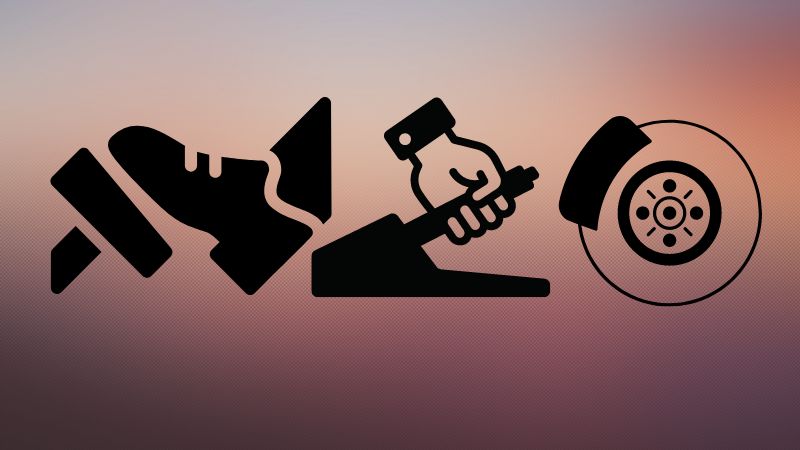The braking system is one of the vital portions of automotive operation. To keep this operation smooth & perfect the first important thing is brake fluid. Low or wrong brake fluid may hamper the braking system of the vehicle. Which is a life-threatening issue. So you should not ignore the symptoms of low brake fluid in a car. Let’s discuss this in detail:

Low brake fluid:
As low brake fluid is a common & dangerous cause for vehicles, we should know about the Causes & symptoms of low brake fluid in a car.
Signs brake fluid is low:
Some common signs of low brake fluid are:
Warning Light:
If you see the brake warning light on the dashboard you should check the brake fluid level. It may due to brake fluid line damage also, so you should check the whole brake system in this case
Spongy Brake Pedal:
If you feel that the brake pedal of your car gives you a spongy or mashy feel, then it could be a reason for worry for you. Because it’s a symptom of low brake fluid. So check it carefully.
Braking takes a Longer time:
If your car brakes take more time to hold the car it is also a sign of low brake fluid. So don’t ignore this kind of situation, check carefully the brake fluid level & system or go to a car mechanic to solve it immediately.
Abnormal color:
If you see the brake fluid turns discolored and dirty then it would be a symptom of low brake fluid.
Read about: Brake Fluid Color
Causes of Low Brake fluid:
It is very dangerous to drive with brake fluid so you should know the causes of low brake fluid in a car and be careful about it. Generally, in the vehicle brake fluid can lobe w for the following common reason:
- If You use the wrong brake fluid, e.g.: your car needs dot 5 brake fluid but you are using dot 3 brake fluid.
- Old worn brake pad also can cause low brake fluid
- If there is a leak in the brake line, then low brake fluid also can occur.
How to check brake fluid?
Find out the master cylinder of the brake system of your car, usually, it should be near or on the brake pedal of the car. If you are confused about it then you can see the manual for the right location of the master cylinder. Then try to understand the brake fluid level, generally, there is marked a full line of the brake fluid reservoir. Even if your car is not too old, then the reservoir should be translucent so that you can easily identify the fluid level. But for the older model, you may need to screw off the cap of the brake fluid reservoir.
Here are important things:
- Don’t Overfill the brake full fluid reservoir, just fill up to the ‘Full’ or MAX marked line.
- Brake fluid may be toxic & harmful to your skin so try to use gloves to check or fill the brake fluid & wash your hand carefully after work.
FAQs
Q. How long can you drive without brake fluid?
First of all, you should not do it. But Practically it is possible but it depends on you. But if there is no brake fluid or low brake fluid then, you will get in trouble if your car needs to stop immediately. So don’t try to do this. If you see symptoms of low brake fluid in your car, try to stop driving as early as possible and find your required brake fluid from the nearest shop.
Q. Can low brake fluid cause a grind?
Yes, the low brake fluid causes grinding or squealing, because if the brake fluid is low then adequate pressure creation is not possible by the brake pedal when the brake is applied.
Q. Can I just add brake fluid?
Yes, you can. If your brake fluid is under MIN level then you can add brake fluid with the recommended fluid like Dot 3 or Dot 4 for your car but don’t overfill while adding new brake fluid. And if you see the brake fluid turns to discolor please change the whole fluid from the reservoir instead of adding fluid.
Final Word:
Hope you have learned a lot about the symptoms & causes of low brake fluid. So if you are confused about your braking performance then check the fluid level & fill it accordingly if needed. Also, mind that worn brake pedals also mislead your car’s braking performance so also check it.
Read Also:

